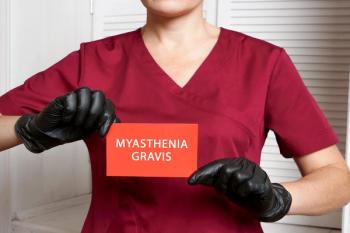
Navigating the New J-Code for Eylea HD: Impact on Billing and Patient Care
The aflibercept 8 mg injection improves patient care by allowing longer intervals between treatments, explains Jose A. Martinez, MD, Austin Retina Associates.
A new Healthcare Common Procedure Coding System (HCPCS) code was made available at the beginning of the year for the aflibercept (Eylea HD) 8 mg injection: J3590.
The recent J-code approval for aflibercept 8 mg has brought significant benefits to patient care for patients with
The aflibercept 8 mg injection was granted
This transcript has been lightly edited for clarity.
Transcript
How has the recent J-code update for Eylea HD impacted your practice, particularly regarding insurance billing and patient care?
As an office that uses a lot of Eylea HD—it's been our preferred drug for some time, [because] it tends to work on a great majority of patients—we're excited about using it. We're excited about the J-code getting approved. I think in the long term, it's going to be better for us. But I will say, as in any transition, when it comes to billing and collecting, it has created some chaos, so it's become very cumbersome. Insurances that were paying us very diligently with the transitional J-code have now stopped paying us because they don't have it uploaded in their system. So, it can be a problem.
Often, we have to go back to Eylea [2 mg] or we have to use a sample, which we know there's a limited number of samples we can use. As a business administrator, using samples does not make business sense, because we still have to pay our staff to administer all the details of inventorying these drugs, billing these drugs, collecting these drugs. So, we really try not to use samples. Also, the drug companies don't like us using samples, for obvious reasons, and there's only so many of those we can use. But that's often the default position of everyone involved, which I don't think is practical in the long run to use that as a default. We're always trying to take great care of our patients, and sometimes the introduction of a new J-code can cause a lot of chaos.
The other frustrating thing is oftentimes some insurance companies are very quick to integrate [J-codes] into their system and others take a long time, so there's a lot of variance depending on the insurance. There'll be probably a year-long transition where this J-code creates some chaos; it probably will increase our AR [accounts receivable] and create a lot of extra work on the back end from our billing department. And we see this in the clinic because it does cause chaos. A patient comes in, they haven't gotten their approval because of the new J-code, and then we got to make a decision on how we're going to handle the situation that has to be explained to the patient, and the patient's confused and not understanding. It's a tough conversation to have often that does consume important clinic time. We'd rather be focused on more positive things and making the patient experience exceptional, so it can be a burden.
How does the 8 mg dose of aflibercept differ from the 2 mg dose?
Traditionally, Eylea came in a 2 mg injection, and that's what we've been using for years, for over a decade now. The HD [high dose] is 4 times the concentration of 8 milligrams and it tends to have a longer duration, which is beneficial for patients. Their treatment intervals can be extended where they don't come in as much, and that's been our experience with the HD. As in every drug, not all of them will work on every patient, but I've been pleased with the majority of patients that I put on the HD [that] I am able to extend their treatment intervals.
How can providers and their patients with diabetic retinopathy benefit from this J-code update for the 8 mg dose?
We're excited about the new J-code, but mainly we're excited about the drug. As far as the patient experience and the doctor experience, the advantage of Eylea HD is clearly the duration of the drug. It does tend to last longer than traditional treatments. Specifically, in our case, the Eylea HD lasts longer than 2 mg in most cases, and we've been very pleased with that, and of course patients are pleased because they don't need to come in as much.
It's an easy conversation. We say, "Hey, we're using the same drug just at a higher concentration," which is a much easier sell than telling someone, "Hey, this is a brand new drug that's different than the old one, that's a different molecule." But, with the HD, we can say, "It's the same molecule just packaged in a more concentrated way that will lead to longer duration most of the time. And that's an advantage to you, because you don't want me to come in as much." Patients are usually very eager to hear that and excited about that, and thankfully, it has played out.
Often, these drugs are marketed to be very useful and sometimes the expectation is that they're going to be universally accepted and beneficial to all patients. But, as we know in medicine, that seldom is the case. But, in this case, Eylea HD actually does tend to work better in most patients that we use it on, which is consistent with the drug studies that showed the same.
Newsletter
Stay ahead of policy, cost, and value—subscribe to AJMC for expert insights at the intersection of clinical care and health economics.







































